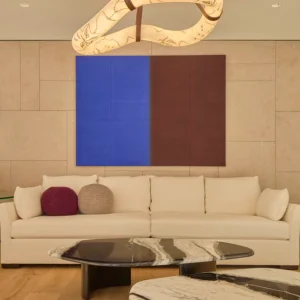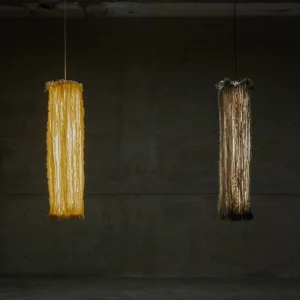
The work of Wim Crouwel has had a profound influence on contemporary graphic design. During the post-war Dutch design scene, dominated by an expressive painterly approach, Crouwel was influenced by modernism and the International Typographic Style, or the Swiss Style. The current exhibition at the Design Museum. Wim Crouwel: A Graphic Odyssey (until 3 July), charts the designer’s prolific career, including a significant body of work for the Stedelijk van Abbemuseum in Eindhoven and later for Amsterdam’s Stedelijk Museum. It was here that he was not only given the opportunity to develop his own graphic language through posters for the museum, but was also commissioned to work on the exhibition design. The most significant aspect of these iconic posters is that Crouwel reflected the subject of the exhibition by communicating it through a striking type and use of colour, and not by using an image. For instance, with the Hiroshima exhibition (1957), which consisted of horrific paintings and drawings by two Japanese artists, Crouwel responded by using heavy black type on a solid fiery red background. Using one word to make an ‘image’-based typography became a running theme throughout his posters during this time.
The use of grids in graphic design had been developed by Swiss designers and this influenced much of the work both on the posters and exhibition catalogues. It was this process that led to Crouwel’s grid-designed lettering. An excellent example of this can be seen in the Vormgevers poster (1968). It was an industrial design exhibition and that gave Crouwel the idea of making the structure visible for the first time, and a typeface that fitted directly into the grid system was developed. There are intricate original drawings on display at the Design Museum that remind us that all this work was done by hand, yet still look fresh and fit entirely into our now digital world.

Another great example of this can be seen through Crouwel’s innovative approach to the calendar designs that he did in the Fifties for the printing firm, Van De Greer. Again, the design solution was entirely typographical and he ended up producing 25 different calendars in total. Type designer David Quay, of the Foundry, approached Crouwel to develop his lettering into digital fonts. With Quay’s expertise, they developed the typefaces together. The first was named Gridnik, after a nickname given to Crouwel by his friends in the Seventies because of his obsession with grids.
In 1963, Total Design was founded, a multi-disciplinary group of kindred spirits including Wim Crouwel, along with Friso Kramer, Ben Bos, Benno Wissing and Paul and Dick Schwarz, whose manifesto was essentially to redesign Dutch design. In the years that he worked at Total Design, Crouwel produced many logotypes and typefaces for companies such as IBM and Olivetti. Through this work, he professionalised corporate identity, which helped shape the face of modernity and the approach to graphic design that is now synonymous with the Netherlands.
There are examples on display of later work influenced by Crouwel and an example of his New Alphabet typeface put to use by designers Peter Saville and Brett Wickens on the cover for the 1988 Joy Division album, Substance 1977-1980.

When I asked Crouwel his reaction to this, he answered that he was flattered that they had used his typeface. However, he added that he had first seen it in a pop magazine and they had altered the letters to make it more legible, which was not the original idea! In the run-up to the exhibition, Crouwel’s New Alphabet typeface has been reproduced on products such as a wallpaper for Cole & Son and a rug for Tai Ping, both designed by Tony Brook, who has co-curated the show.
At 83, Wim Crouwel is still working and was recently commissioned to design the front cover of Wallpaper magazine to coincide with this retrospective. An exhibition like this in London is long overdue and the work on display stands as an education to students of communication design and practising professionals alike.





